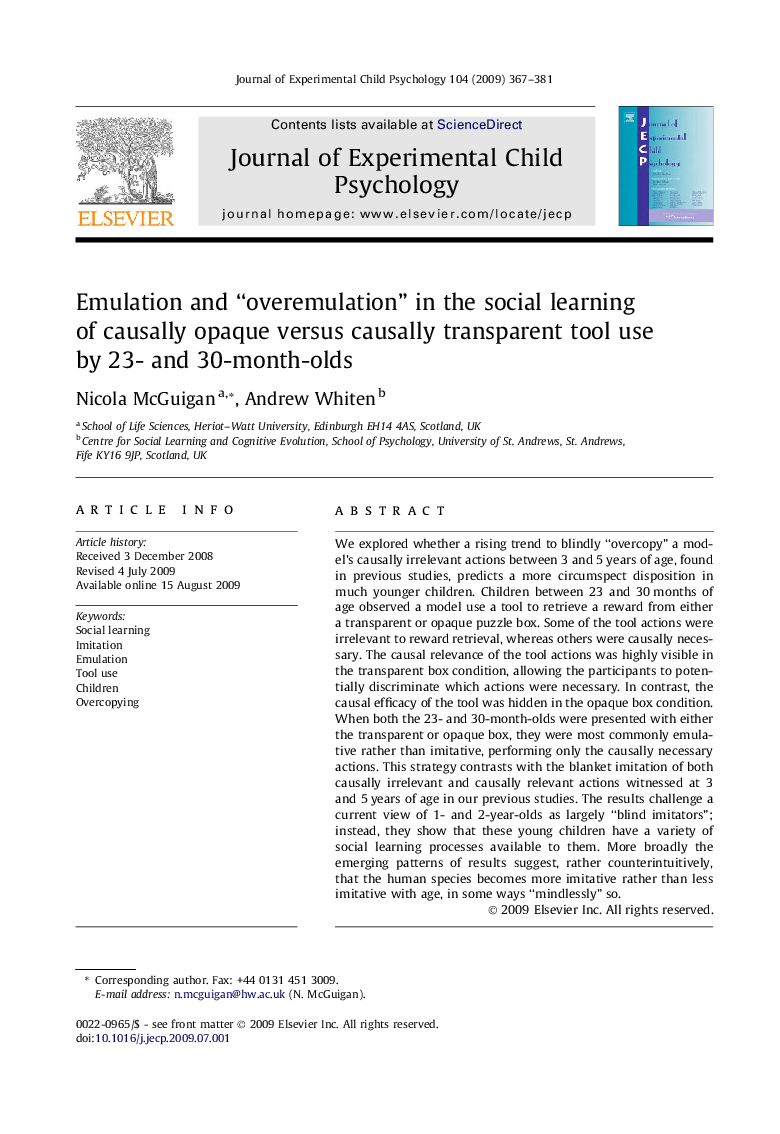| کد مقاله | کد نشریه | سال انتشار | مقاله انگلیسی | نسخه تمام متن |
|---|---|---|---|---|
| 918573 | 919496 | 2009 | 15 صفحه PDF | دانلود رایگان |

We explored whether a rising trend to blindly “overcopy” a model’s causally irrelevant actions between 3 and 5 years of age, found in previous studies, predicts a more circumspect disposition in much younger children. Children between 23 and 30 months of age observed a model use a tool to retrieve a reward from either a transparent or opaque puzzle box. Some of the tool actions were irrelevant to reward retrieval, whereas others were causally necessary. The causal relevance of the tool actions was highly visible in the transparent box condition, allowing the participants to potentially discriminate which actions were necessary. In contrast, the causal efficacy of the tool was hidden in the opaque box condition. When both the 23- and 30-month-olds were presented with either the transparent or opaque box, they were most commonly emulative rather than imitative, performing only the causally necessary actions. This strategy contrasts with the blanket imitation of both causally irrelevant and causally relevant actions witnessed at 3 and 5 years of age in our previous studies. The results challenge a current view of 1- and 2-year-olds as largely “blind imitators”; instead, they show that these young children have a variety of social learning processes available to them. More broadly the emerging patterns of results suggest, rather counterintuitively, that the human species becomes more imitative rather than less imitative with age, in some ways “mindlessly” so.
Journal: Journal of Experimental Child Psychology - Volume 104, Issue 4, December 2009, Pages 367–381